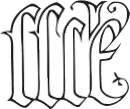Transaction Type
- (-) Remove Census filter Census
- (-) Remove Lease filter Lease
- (-) Remove Sale filter Sale
- Chronicle entry/narrative sources (1) Apply Chronicle entry/narrative sources filter
- Eleemosynary grant (1) Apply Eleemosynary grant filter
- Privilege/exemption (1) Apply Privilege/exemption filter
- Purchase (1) Apply Purchase filter
Displaying 1 - 1 of 1
RRR:
Eleemosynary grant
2437 year: 1243
initiator: Marsilius Georgius [Marsilio Zorzi] bajulus in Syria Venetorum
text:
sources: Marsilio Zorzi, pp. 101, 135-71 (RRH no. 1114)
comments: [369] For the date, see Marsilio Zorzi, p. 151. [370] Or Templum Domini. [371] Or the Knights Templar
All Rights Reserved 2016

